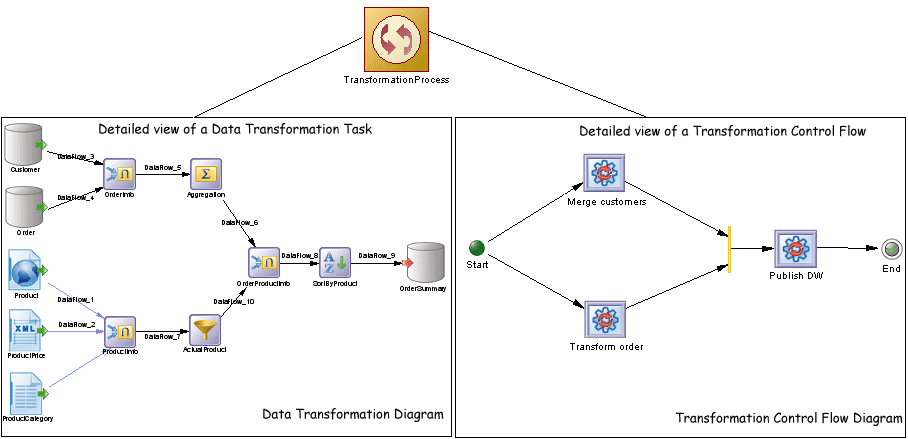

Chapter 9 Data Transformations Basics
In most enterprises, information is stored in separate databases, data warehouses and applications causing more and more difficulties in the information management.
This compels the need to recombine data coming from diverse sources into one that satisfy your business requirements.
ETL (Extract Transform and Load) and EII (Enterprise Information Integration) are two technologies that fully address that need in two different ways:
ETL (Extract Transform and Load) is a process in data warehousing which refers to three separate functions combined into a single programming tool:
Note that ETL is not a standard procedure but multiple processes, which vary according to an enterprise needs.
EII (Enterprise Information Integration) combines raw data by orchestrating and organizing queries to diverse source systems without any previous aggregation of the content. Note that data is not permanently moved into a new location; rather the source data remains where they are.
PowerDesigner Information Liquidity Model lets you design and document ETL and EII processes, together with providing a link to the other metadata, such as the PDM for example. This lets ETL and EII processes benefit from the traceability and impact analysis features of PowerDesigner.
The Information Liquidity Diagram lets you represent data combination functions in a high-level view as follows:

The Information Liquidity Model lets you represent data transformation tasks and their workflow in detailed views as follows:

The Data Transformation Diagram lets you define a detailed view of a task. It shows how data is extracted from data inputs, transformed by elementary or complex actions and loaded into data outputs. Data inputs and outputs are linked to the source and target data stores defined in the high level view.
The Transformation Control Flow Diagram lets you define the sequence of execution of a series of tasks. Each task execution is an instance of a task.
| Copyright (C) 2007. Sybase Inc. All rights reserved. |

| |